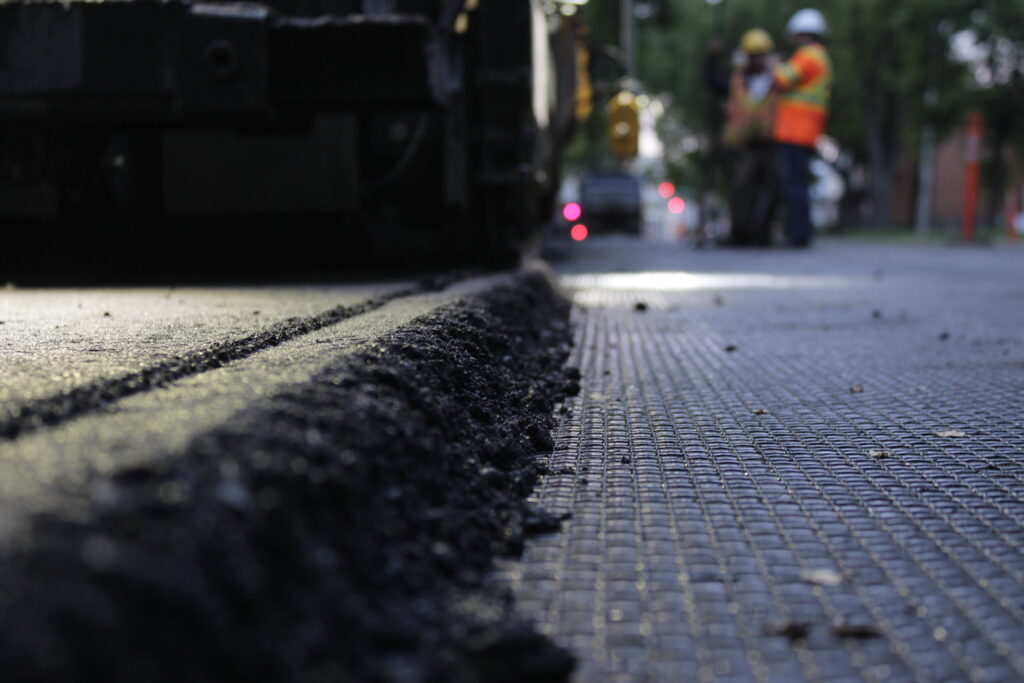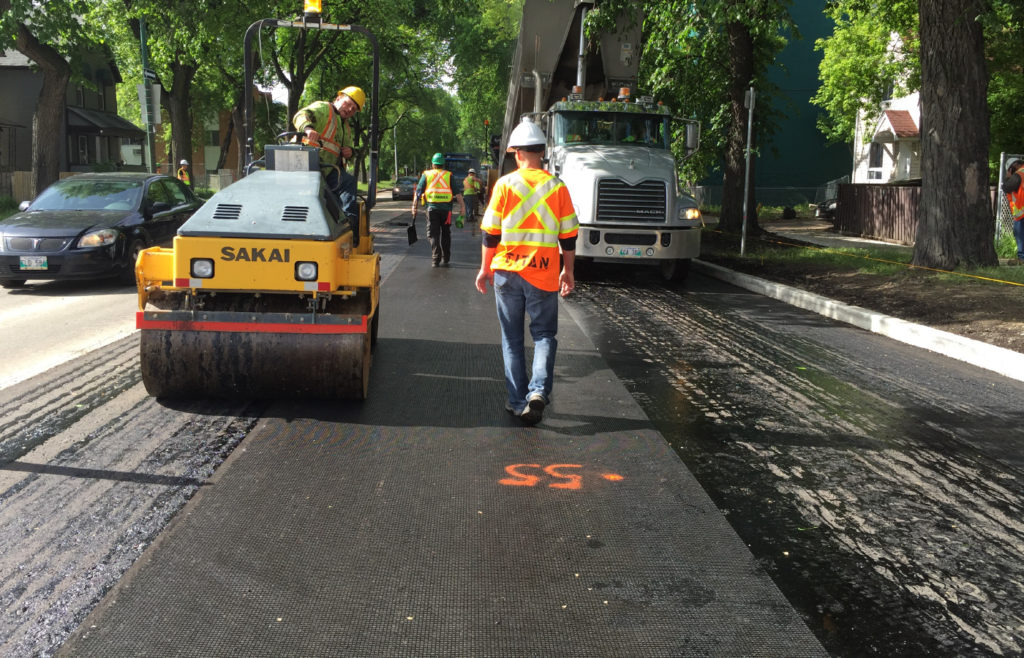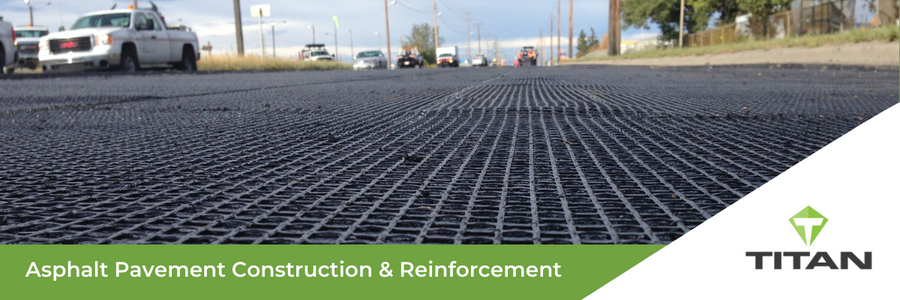Asphalt pavement construction and rehabilitation is a massive responsibility across Canada and the USA. In Ontario alone, $2.6 billion was reaffirmed in 2021 for 580 highway expansions and rehabilitation projects.
Cost, efficiency, sustainability and carbon emissions caused by mixing and laying asphalt are growing concerns for the construction sector due to a steady increase in road rehabilitation projects. To reduce costs and mitigate carbon emissions, the use of reclaimed asphalt pavement (RAP) is becoming the new standard for asphalt construction and rehabilitation.
Reclaimed Asphalt Pavement (RAP): Designing for Performance Life
Although RAP addresses growing concern over cost and carbon emissions, it must be designed properly to ensure the long-term serviceability of the asphalt structure. Repeated traffic loading is a major variable in design for asphalt pavement structures: the RAP mix design must be able to effectively resist cyclical traffic loading to enable a pavement structure with satisfactory long-term performance.
The use of RAP for carbon emission reduction becomes redundant if the asphalt pavement structure does not reach the intended service life; having to frequently undergo rehabilitation. To avoid costly rehabilitation, incorporating geogrids into asphalt pavement structures proves successful.
Using Geogrids in Conjunction with RAP
The design challenges that arise from using RAP can be addressed with Spartan Road Grid™.
Suitable for all types of asphalt mixes, Spartan Road Grid™ is a line of fiberglass geogrids designed specifically as an interlayer for asphalt reinforcement. Spartan Road Grid™ systems work to enhance pavement life and performance while helping to reduce maintenance costs.
Incorporating geogrids specifically designed for asphalt reinforcement in pavement construction or rehabilitation projects increases resistance to pavement rutting, reflective cracking, and fatigue cracking.

Conventional Solutions Are Hurting Your Budget
The long-term durability of asphalt pavement structures is essential to avoid costly rehabilitation. In addition to the use of RAP causing potential issues with the performance life of the structure, local site-specific problems must be accounted for.
Some common factors that affect the life cycle of roads:
- Low temperatures
- Seasonal freeze-thaw cycles
- Moisture penetration
- Traffic fatigue
- High-water table at application site
- Weak, saturated subgrade at application site
- Surface aging and cracking
Traditional rehabilitation methods that address these problems consist of milling and applying a new inlay and overlay. These methods do nothing to enhance pavement performance or longevity and may require repair within five years.
Spartan Road Grid™ in Action (Winnipeg, MB)
Asphalt is a durable and economical material for road construction. When asphalt reinforcement interlayers are not used, cracks within existing lower pavement layers can reflect up into newly paved asphalt layers. This may require frequent repairs and drive-up maintenance costs.
In Winnipeg, Manitoba, roads are susceptible to extreme freeze thaw cycles as the temperature fluctuates between +40 and -40 °C within a year. As climate change intensifies, asphalt pavement roads are encountering more intense weather and consequently suffering from performance failures. Highly durable and formulated to resist ultraviolet degradation, Spartan Road Grid™ is designed to withstand extreme environmental conditions
In the following Winnipeg application, Spartan Road Grid™ 10C reduced overlay thickness by 40-50mm, which helped decrease project costs.
The grid was placed between the asphalt base and top layer to reinforce the overlay/inlay and increase the strength and stiffness of the asphalt. The tack-coat was applied and allowed to fully cure before paving to develop adequate bonding between the Spartan Road Grid™ 10C and the compacted asphalt overly that was placed over top of the geogrid. Spartan Road Grid™ 10C provided a permanent water proofing membrane in addition to structural reinforcement of the asphalt.
Download Case Study: Asphalt Road Reconstruction (Winnipeg, MB)
More Spartan Road Grid™ Case Studies: Here

Benefits of Spartan Road Grid™
Spartan Road Grid™ offers a wide range of benefits for asphalt reinforcement projects:
- Rutting prevention under high ambient pressures and intense wheel loads
- Extended life due to minimized and retarded reflective cracking
- Increased fatigue life of pavements with weak foundations
- Reduced pavement water infiltration which otherwise weakens the road base and sub-grade
- Reduced overlay thickness to a minimum of 50 mm
- Minimized thermal and stress-related cracking
Suitable Applications
- Airport runways
- Taxiways, roads, bridges
- Parking lots
- Jointed concrete highways to control reflective cracking
- High traffic pavement to control rutting
- New highway construction
- Road maintenance & repair jobs to improve pavement life
Learn more about product benefits and features here: Spartan Road Grid Brochure
Unsure how to spec Spartan Road Grid™ in your next design?
We offer FREE pre-design assistance for all geogrid-related applications. Simply give us a call or request a consultation using the form below.
If you already know your project requirements, click here to get a quote!

